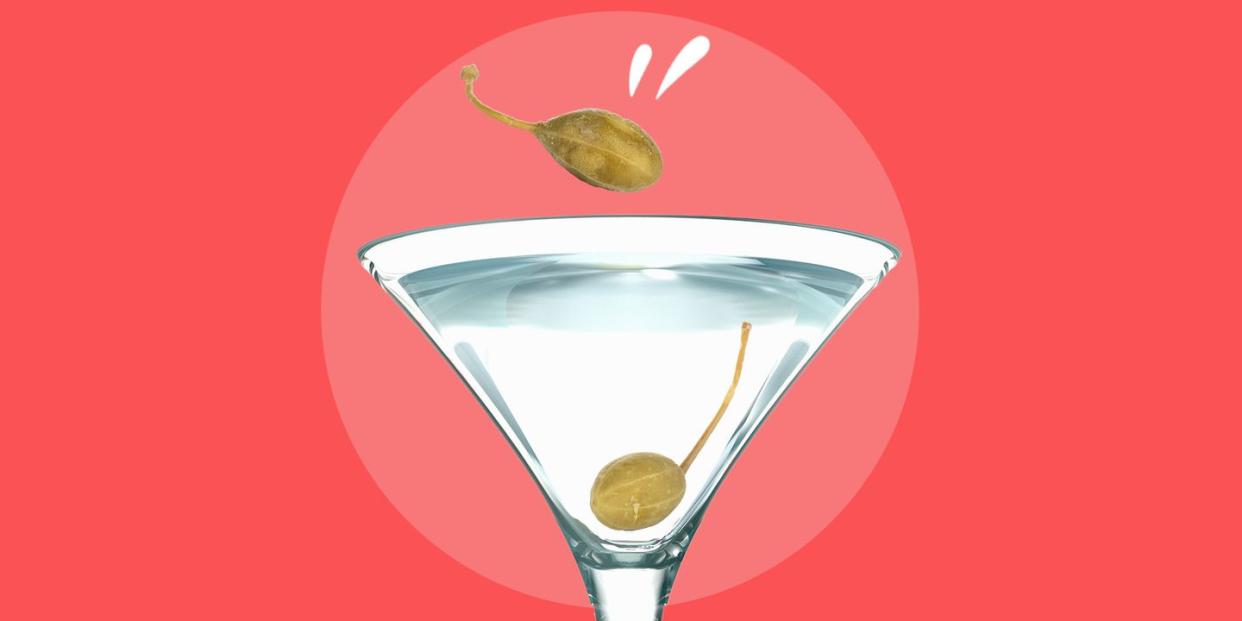Swap the Olives in Your Dirty Martini With Caperberries. You Won't Be Disappointed.

I had my first caperberry over the summer, garnishing a salad I’d ordered on vacation. It was five times the size of a caper—much closer in size to an olive or a grape. It had a long, thin stem, and, before biting into it, I just assumed it was some kind of olive I’d never seen before.
It was absolutely delicious. It tasted a little like a caper, but milder, less jarring. It was briny and salty, and it had satisfyingly crunchy seeds in the middle, unlike an olive. When I asked my server what I’d just eaten, they explained it wasn’t an olive at all. It was a caperberry. “A caper? But it’s so big,” I said. “A caperberry,” they said again, walking away without any further explanation.
I turned to Google. Capers, which we see more commonly in dishes, are the flower bud of the caper, and they’re served pickled. If left to bloom, the capers turn into a fruit: caperberries, which are then pickled, as well.
How could there be an entire version of the caper this delicious that I’d never heard of? I felt robbed of years of salads topped with caperberries, and impressively garnished cheese plates. My college roommate regularly ate jars of olives as a snack—caperberries would be a worthwhile replacement, as the flavor of a caperberry is smoother than a caper, making it more olive-like.
When I got back to New York, I set out on a mission to find them. It wasn’t, it turns out, all that difficult. Sahadi’s, a Middle Eastern grocery in Brooklyn, had a few brands to choose from. My husband was determined to make more use of them than just snacking, and sliced some up to replace olives as a topping for chicken over rice, which turned out incredible. They added a nice crunch and a briny bite to the dish.
Then, when I mentioned caperberries to my colleagues at Esquire, one replied, “Oh yeah, I know about caperberries. You must try them in a martini!” I'm no cocktail purist; I like my martinis to taste like a swig of olive juice. If I'm being honest, a blue cheese-stuffed olive garnish is my favorite part of the drink. So, I was very willing to try a new twist. I just substituted caperberry brine for olive brine, and caperberry garnishes for olives; I kept the proportions of vodka and dry vermouth the same. It stood apart from a typical dirty martini. The briny edge was slightly less bright than olive juice, giving a more complex flavor to the drink.
I won’t be replacing all of my olives with caperberries—when you’re in the mood for a nice, salty olive, nothing else compares—but I’ve happily expanded my garnish repertoire for eating and for drinking.
You Might Also Like